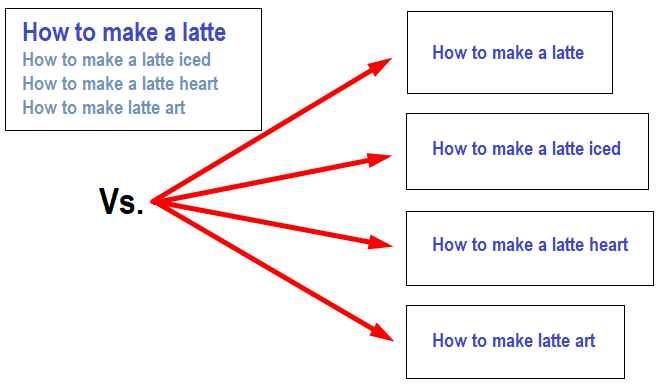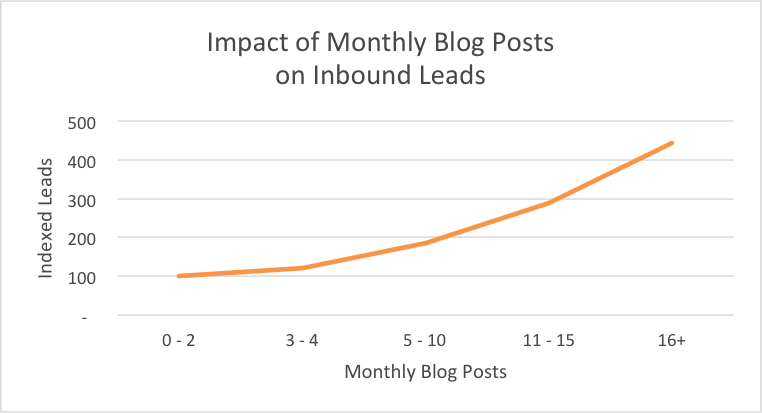Bad SEO content is comparable to a bunch of cockroaches invading a house.
They. Just. Won’t. Die.
They’re hard to find and easy to miss. When you do see one, it scuttles out of sight before you can do anything about it.
And, if you let the problem get out of hand…
Well, let’s not go there.
Take a look at a few important facets influencing modern SEO:
- We’re far past Google’s Hummingbird update.
- Voice search is ubiquitous to the point where you expect to see voice assistants everywhere, even at your grandma’s house.
- We live in a hyper-connected online world.
Despite all this, bad SEO content tactics proliferate. They continue to haunt your webpages, search rankings, traffic, and conversions.
To lift your content and website out of the 4th or 5th page of search results (A.K.A. Google’s dung heap), it’s time to get with the times.
Don’t worry, though – you can catch up to modern SEO and vastly improve your search visibility.
Take a look at some of the most common bad SEO content tactics, and learn how you can banish them from your web presence for good.
1. Using One Target Keyword Per Page Without Variations
In SEO days of yore, it was common to see one keyword targeted per page. Any variations of that keyword were either ignored or spread out over multiple pieces of content.
For example, take the keyword “how to make a latte.” Its keyword variations would have been separated from it (versus used naturally in the same piece) and targeted on their own.

Of course, this is old hat.
Separating related keywords like this ignores the importance of semantic search, which looks at the topic of a page (rather than repeated instances of keywords) to determine its relevancy to a user’s search intent.
How do search engines determine a page’s topic?
Through the target keyword, related terms, keyword variations, and synonyms all appearing in the same piece of content.
What to Do Now
Focus on staying topically relevant in your content, using the focus keyword as a jumping-off point. Use variations of that keyword naturally throughout the piece.
If you want to be sure to include some good keyword variations in your content, use this easy method to catch them:
- Go to Google.
- Type in a keyword.
- Scroll to the bottom to find additional, related keywords to include in your content piece.

2. Expecting Miracles from Short Blogs (Under 1,000 Words)
If you still think short blogs perform well in search (and social media), you’re living in the past.
Usually, to Google, short content = thin, underdeveloped, shallow content.
In response to this statement, many people will cry, “But some short-form blogs do really well in search!” And they’re not entirely wrong.
However, those blogs are usually an exception to the rule.
Historically and statistically speaking, high-quality long-form content wins over thin content, hands-down.
Don’t believe me?
How about BuzzSumo, which analyzed more than 100 million articles. The most-shared posts were long-form (more specifically, more than 3,000 words):

And, according to a Backlinko study of 1 million blog posts, long-form content correlates with higher rankings:

What to Do Now
Write longer posts that deep-dive into your chosen topic.
Longer content is more thorough content. It comprehensively answers the user’s question, which is what Google prioritizes.
3. Posting Content Erratically
Another no-no for content SEO: thinking one blog here and there will do.
This type of erratic posting schedule doesn’t help you win over Google one bit. You won’t be:
- Giving Google fresh content.
- Giving your website more opportunities to rank with more indexed pages and more targeted keywords.
- Building your authority steadily with users.
Especially if you want more traffic and leads coming in from search results, you need to create and publish content regularly.
A great HubSpot benchmark study that illustrates this is one where they looked at blogging frequency data from over 13,500 marketers and agencies.
Those who blogged regularly and consistently (16+ times per month) earned the most traffic and the most leads. Specifically, as compared to those who blogged 0-4 times per month, the consistent bloggers got 3.5x more traffic and about 4.5x more leads.

What to Do Now
Set a blogging schedule and stick to it. Post consistently and regularly to build up your content cache.
4. Prioritizing Content Quantity Over Quality
Hand in hand with content consistency, content quality matters, too.
In fact, Google employs search quality evaluators, or raters, to help determine the quality of a page from a human standpoint. Google uses this data to improve the function of their search algorithm.
According to Google’s quality rater guidelines, pages with the highest quality:
- Achieve their intended purpose.
- Demonstrate a high level of E-A-T (expertise, authoritativeness, and trustworthiness).
- Have a “satisfying” amount of main content (MC), and more.

Quality is huge.
To that end, a good amount of quality content will take you far.
Quality + quantity need to work together for the best results.
A few years ago, you could rank for a blog post that was merely “good enough” or “as good as” the page 1 results. Today, with the staggering amount of content published daily, that mindset won’t cut it.
To rank, your content needs to be better than the results on page one.
If you can’t maintain quality and give people a reason to read, you’re worried about quantity. And, funnily enough, focusing on quantity won’t net a high-quality lead.
On the other hand, if you champion quality to the point where you publish random blog posts on a schedule that amounts to “Surprise!” – you won’t be helping your SEO, then, either.
What to Do Now
Find a balance where you can create and publish the highest-quality content possible on a consistent basis. As soon as your content quality suffers, that’s when you’ll know you’re doing too much.
Even posting once a month consistently, with the highest quality possible, is better than nothing!
5. Forgetting About SEO Content Issues Like Duplicate Content
According to a SEMrush study of over 100,000 websites, one of the most common on-page SEO errors is duplicate content. Nearly 66 percent of websites in the study had severe issues with it.

What to Do Now
Luckily, this is probably one of the easiest SEO errors to fix.
Because duplicate content is just multiple pages that are either similar to or match each other, addressing the duplicates will greatly improve your SEO.
Google has lots of tips on how to properly deal with duplicate content that may come in handy. Yoast also has an in-depth guide to duplicate content that’s worth a read.
How Properly Optimized Inbound Content Can Win Big
Here’s a little story to show why focusing on great inbound content for your brand can mean exponential bottom line growth. (At my writing agency, we literally sell ourselves through our writing! Ninety-nine percent of our leads come in through our content.)
Just a few days before I wrote this piece, my strategist was telling me on Slack about a scheduled sales call. It was with a huge company that came across one of our blogs when they were surfing Google for “content marketing and sales,” and decided to hit us up for content.

The call went extremely well – they already loved us because of the blog post on our site, which focused on adding value and exposing a hot topic that could be considered controversial.
Because of that blog, they’re about to put down their entire marketing budget with us!
Great SEO content can significantly shorten the sales cycle for almost any brand. It’s more than worth the investment.
Studies show that many online buyers today interact with content first, before even talking to a sales rep.
Follow these tips to succeed and avoid getting left behind with yesterday’s outdated SEO content trends!
More SEO Content Resources:
- 17 Tactics to Create Engaging & SEO-Friendly Content
- 5 Examples of Terrible Content That Ranks Remarkably Well
- An Up-to-Date Guide on Good SEO Content vs. Bad SEO Content
Image Credits
All screenshots taken by author, October 2018


